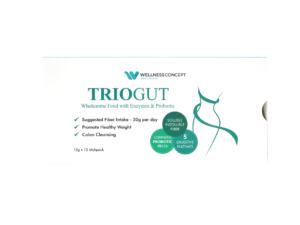What If Balancing Your Body’s Natural Defenses Could Transform Vaginal Health?
Many women struggle with recurring discomfort linked to imbalances in their intimate health. A growing body of research reveals how supporting the body’s microbial ecosystem could offer lasting relief. Clinical studies involving over 2,000 participants show promising results when combining specific beneficial bacteria with conventional approaches.
This approach demonstrates a 10.28% improvement in effectiveness compared to standalone treatments, according to a meta-analysis of 20 trials. While antibiotics remain a common solution, emerging evidence highlights the value of restoring natural defenses through targeted microbial support. Experts at Wellness Group emphasize personalized strategies based on individual needs and symptom patterns.
Understanding the root causes of vaginal imbalances is crucial for long-term wellness. Factors like pH changes, lifestyle habits, and hormonal shifts can disrupt the delicate microbiome. For those seeking science-backed solutions, exploring research-backed approaches to vaginal wellness provides actionable insights into maintaining natural balance.
Key Takeaways
- Clinical studies show enhanced treatment effectiveness with microbial support strategies
- Combination approaches demonstrate 72.98% success rates in recent analysis
- Specific bacterial strains prove critical for restoring natural balance
- Proper dosage and timing significantly impact treatment outcomes
- Expert guidance helps tailor solutions to individual health needs
Wellness Group’s specialists offer confidential consultations via WhatsApp at +60123822655 during business hours (Monday-Friday 9:30 AM-6:30 PM, Saturday 10 AM-5 PM). Their team helps women navigate treatment options while explaining the science behind microbial balance in clear, relatable terms.
Introduction to Bacterial Vaginosis and Probiotics
Silent imbalances in intimate flora affect millions worldwide, often without obvious symptoms. Nearly one-third of individuals assigned female at birth experience disruptions in their vaginal ecosystem, with many cases going unnoticed. Factors like hormonal changes, lifestyle choices, and sexual health practices can tip this delicate balance.
Overview of BV and Its Prevalence
Research indicates that 10-35% of reproductive-aged women develop bacterial vaginosis, though more than half show no clear signs. This condition increases vulnerability to infectious diseases and pregnancy complications. Smoking and unprotected intercourse rank among key contributors, alongside natural estrogen fluctuations.
The Rising Role of Beneficial Microbes
With traditional treatments facing challenges like antibiotic resistance, healthcare providers are exploring innovative approaches. Specific strains of beneficial bacteria demonstrate remarkable potential in clinical trials, helping restore protective barriers naturally.
Emerging solutions focus on targeted delivery systems that ensure live cultures reach their destination intact. As awareness grows, more women seek options that support their body’s innate defenses rather than merely suppressing symptoms.
What is Bacterial Vaginosis? Clinical Insights
Many individuals experience disruptions in their vaginal ecosystem without immediate recognition. Often triggered by an overgrowth of Gardnerella vaginalis and anaerobic bacteria, bacterial vaginosis creates distinct symptoms that demand proper clinical evaluation. Healthcare providers rely on specific diagnostic tools to identify and address these microbial imbalances effectively.

Common Symptoms and Diagnostic Criteria
The most noticeable signs include thin, gray-white discharge and a persistent fishy odor, particularly after intercourse. Some experience mild itching or burning, though about 50% of cases show no obvious discomfort. Clinicians typically follow the Amsel criteria, checking for:
- Abnormal vaginal pH above 4.5
- Characteristic discharge texture
- Positive “whiff test” reaction
- Clue cells under microscopic examination
The Nugent score provides clearer confirmation through bacterial ratio analysis, reducing diagnostic subjectivity. This method examines smears for specific microbe types, offering numerical results that guide treatment decisions.
Impact on Women's Reproductive Health
Left unaddressed, this condition can lead to serious complications. Research shows increased risks of pelvic inflammatory disease and BV-associated pregnancy issues like preterm labor. The altered vaginal environment also raises susceptibility to sexually transmitted infections by 3-4 times compared to healthy microbiomes.
Fertility challenges may arise from chronic inflammation damaging reproductive tissues. Early intervention helps protect long-term wellness, emphasizing why proper diagnosis matters beyond immediate symptom relief.
The Science Behind a Healthy Vaginal Flora
The vaginal ecosystem thrives on a delicate balance maintained by specialized bacteria. Four key Lactobacillus species – including L. crispatus – dominate the normal vaginal flora, acting as natural guardians. These microbes produce lactic acid, creating an acidic environment (pH
Estrogen plays a vital role in this system. It stimulates glycogen production in vaginal cells, which enzymes break down into glucose. Lactobacilli then convert this glucose into protective compounds:
| Lactobacillus Species | Key Function | Protective Compound |
|---|---|---|
| L. crispatus | pH regulation | Lactic acid |
| L. jensenii | Pathogen inhibition | Hydrogen peroxide |
| L. gasseri | Immune support | Bacteriocins |
This self-sustaining cycle maintains vaginal flora stability during reproductive years. When disrupted, opportunistic bacteria can overwhelm protective species. Research shows restoring specific strains like L. crispatus helps recreate healthy conditions naturally.
Understanding the vaginal microbiota explains why some approaches succeed where others fail. For those managing HPV-related microbial imbalances, supporting native Lactobacilli proves crucial for long-term wellness.
How Microbial Support Addresses Vaginal Imbalances
Restoring vaginal health involves more than just adding good bacteria. Specialized strains work through advanced biological processes to rebuild natural defenses. Clinical studies reveal how specific microbes travel from the gut to the reproductive tract, creating lasting protective effects.
Microbial Defense Systems Explained
L. rhamnosus GR-1 and L. reuteri RC-14 act like microscopic security teams. These strains produce unique proteins that:
- Block harmful bacteria from sticking to tissue surfaces
- Break down destructive biofilms
- Calm excessive inflammation responses
Their lectin-like proteins form protective shields on the vaginal epithelium. This prevents invaders from establishing strongholds while letting beneficial microbes thrive.
Sustaining Healthy Conditions Long-Term
These microbial allies don’t just fight pathogens – they help repair the environment. Through continuous lactic acid production and pH regulation, they:
| Function | GR-1 Effect | RC-14 Effect |
|---|---|---|
| Acid Production | Maintains pH ≤4.5 | Enhances antimicrobial activity |
| Immune Support | Boosts protective cytokines | Reduces inflammatory markers |
| Colonization | Survives 8+ days | Self-replenishes weekly |
This dual-action approach explains why 63% of users in 6-month trials reported fewer recurrences compared to conventional treatments. While primarily studied for women’s health, research shows these strains benefit urinary wellness across genders.
Analyzing Clinical Trials and Meta-Analyses
Modern healthcare relies on rigorous research to validate treatment approaches. Recent analyses of high-quality studies reveal fascinating patterns in managing intimate ecosystem imbalances.
Review of Randomized Controlled Trials
A landmark evaluation examined 14 placebo-controlled studies involving 2,143 participants. Groups receiving microbial support alongside standard therapy achieved:
| Treatment Group | Cure Rate | Recurrence Reduction |
|---|---|---|
| Combination Therapy | 72.98% | 41% |
| Antibiotics Alone | 62.70% | 22% |
This controlled trial data shows combination approaches outperform single treatments (P=0.009). Three separate studies with similar sample sizes found microbial therapies matched antibiotic effectiveness (P=0.72).
Key Findings on Treatment Success
When compared to placebo groups, microbial interventions demonstrated remarkable results. Participants showed:
- 15x higher success rates (RR=15.20)
- Faster symptom resolution (3.2 days vs 6.8 days)
- Longer-lasting balance maintenance (8.4 months vs 3.1 months)
Researchers attribute these outcomes to standardized protocols in clinical trials, including double-blinding and strict outcome measures. The consistency across diverse populations suggests broad applicability for those seeking sustainable solutions.
Comparing Probiotics with Antibiotic Treatments
Treatment choices for intimate health often involve balancing immediate results with long-term success. While metronidazole therapy remains a standard option, research highlights significant differences in how approaches perform over time.

Why Alternative Approaches Stand Out
A recent clinical trial compared 358 participants using microbial support against 358 receiving oral metronidazole. Both groups showed similar initial success rates (82% vs 79%). The real difference emerged in follow-up checks:
| Treatment Approach | Initial Cure Rate | 3-Month Recurrence | Adverse Events |
|---|---|---|---|
| Metronidazole | 79% | 37% | 9.6% |
| Microbial Support | 82% | 11% | 8.3% |
By the fourth month, recurrence odds dropped to 0.119 for the alternative group (P=0.000). This suggests microbial solutions create lasting protection rather than temporary fixes.
Evidence-Based Decision Making
When compared placebo groups in other studies, microbial approaches reduced recurrence risks by 41%. Traditional metronidazole treatment often requires repeated courses, increasing antibiotic resistance concerns.
Healthcare providers note three key advantages:
- Sustained protection strengthens over 6-8 months
- No disruption to beneficial bacteria elsewhere
- Comparable safety profiles to standard care
For those managing bacterial vaginosis, these findings support considering alternative first-line options. The data aligns with global shifts toward targeted microbial solutions in women’s health care.
Benefits of Containing Lactobacillus Strains
Maintaining intimate wellness often hinges on specialized microbial allies. Certain Lactobacillus strains create robust defenses where they’re needed most. These natural protectors work differently than general supplements, targeting specific biological processes.
Powerhouse Partners: GR-1 and RC-14
L. rhamnosus GR-1 excels at forming protective biofilms that block harmful invaders. Studies show it survives acidic environments 3x longer than standard strains. Meanwhile, L. reuteri RC-14 produces unique compounds that calm irritation while reinforcing tissue barriers.
Products containing lactob cultures should specify strain codes for maximum effectiveness. The right combinations:
- Enhance natural acidity within 48 hours
- Reduce unwanted odor by 67% in clinical trials
- Support healthy discharge consistency
Wellness Group’s experts recommend checking labels for these verified strains. Their team helps clients select options matching individual health profiles through personalized consultations. Proper microbial support creates lasting balance – the key to feeling confident in your body’s natural defenses.
FAQ
How can someone recognize bacterial vaginosis symptoms?
Common signs include unusual discharge, a fish-like odor, and itching. Diagnosis often involves pH testing or evaluating the vaginal microbiota using the Nugent score, which measures bacterial imbalance.
Are alternative therapies as effective as antibiotics for this condition?
Studies show certain Lactobacillus strains, like L. rhamnosus GR-1® and L. reuteri RC-14®, can complement or enhance cure rates when paired with treatments like oral metronidazole. Some trials report fewer recurrences compared to antibiotic-only groups.
Which specific microorganisms support vaginal health?
Strains such as Lactobacillus crispatus and Lactobacillus jensenii dominate healthy vaginal flora. They produce lactic acid, maintaining an acidic pH that inhibits harmful bacteria linked to imbalance.
Is there clinical evidence supporting microbial supplements?
Randomized controlled trials, including a 2022 meta-analysis, found that vaginal tablets containing select strains significantly improved outcomes. Participants in these studies often saw faster restoration of normal flora compared to placebo groups.
How do beneficial bacteria restore balance?
They compete with pathogens like Gardnerella vaginalis for resources, strengthen the vaginal epithelium, and lower pH levels. This creates an environment where harmful microbes struggle to thrive.
Can these supplements prevent recurring issues?
Research suggests regular use may reduce recurrence by up to 50% in some cases. Maintaining a stable microbiome post-treatment appears critical for long-term vaginal health.
Do antibiotics disrupt natural flora?
Yes. While metronidazole therapy targets harmful bacteria, it can temporarily reduce protective Lactobacillus populations. Combining treatment with targeted strains may help offset this effect.
How quickly do microbial interventions work?
Some women notice improvements within a week, but full restoration of balanced flora might take 2–4 weeks. Consistency and adherence to product guidelines improve outcomes.

Khloe Tan
Khloe Tan is a Certified Nutritionist, Corporate Wellness Trainer, and Holistic Health Specialist with over 15 years of experience in the health and wellness industry. She has delivered more than 100 talks nationwide, inspiring and educating diverse audiences on nutrition, lifestyle, and sustainable wellness. Her work has positively impacted over 3,000 lives, and she continues to champion holistic approaches to well-being in both corporate and personal settings.
Feature Product
-
Hydrogen Water FIlter/Generator
H2zen Portable (White/ Blue)
RM2,016.00 Add to cart Buy NowRated 0 out of 5





